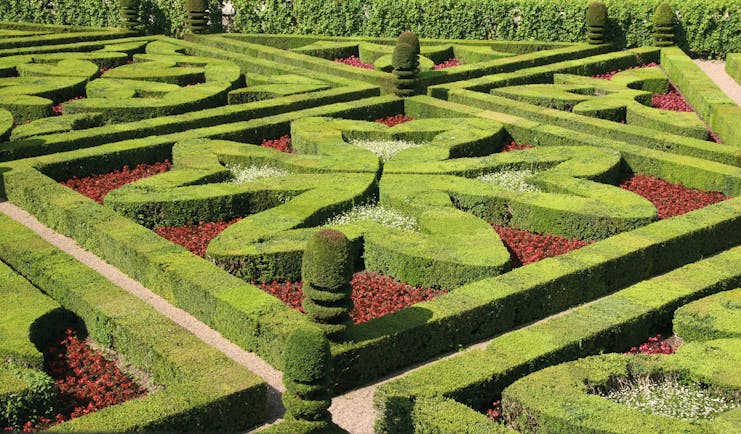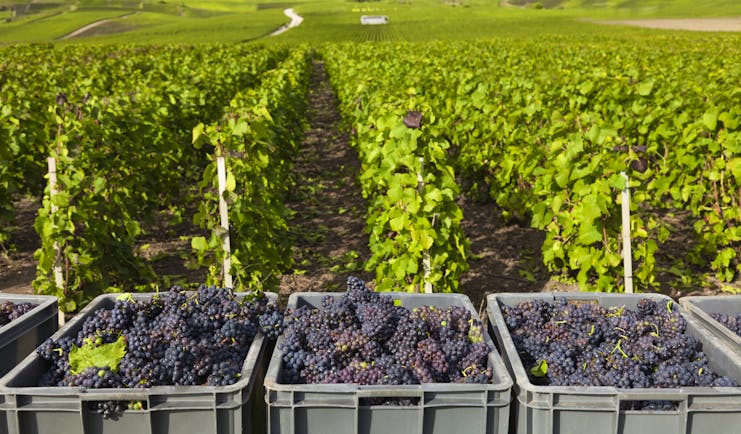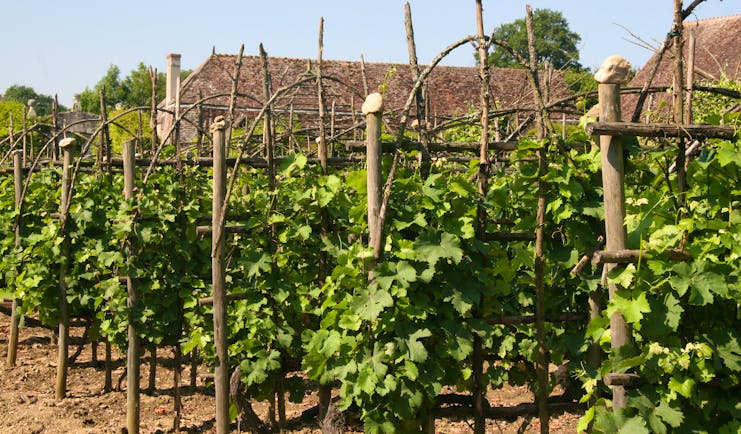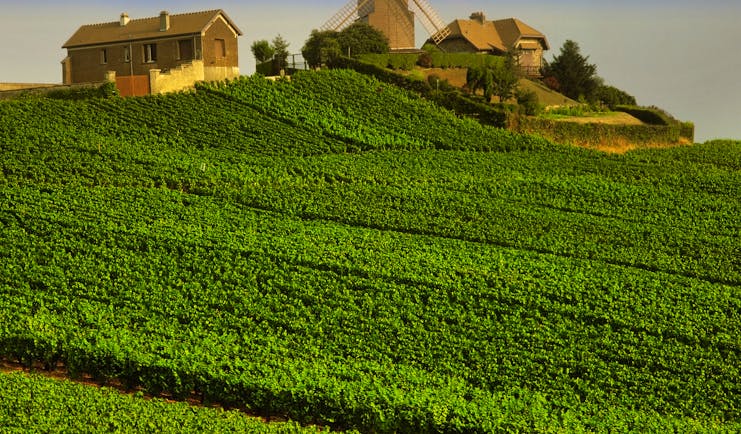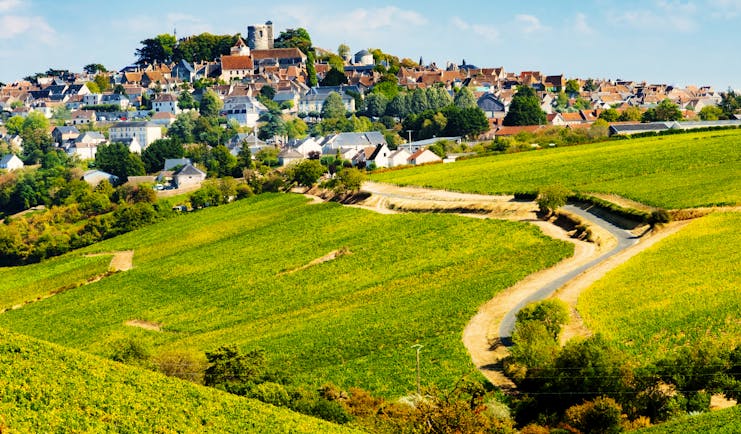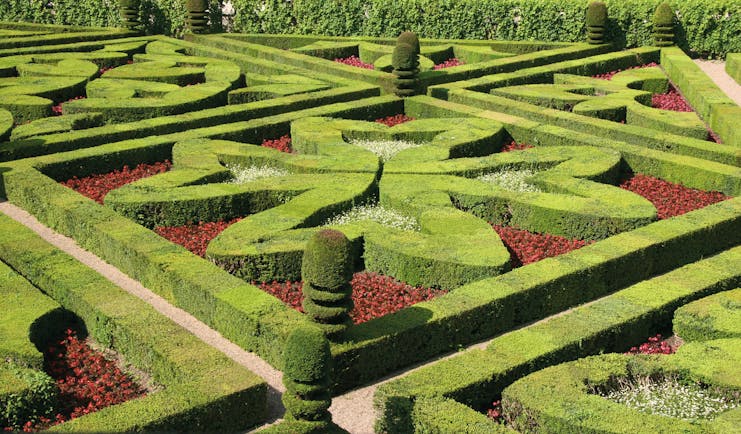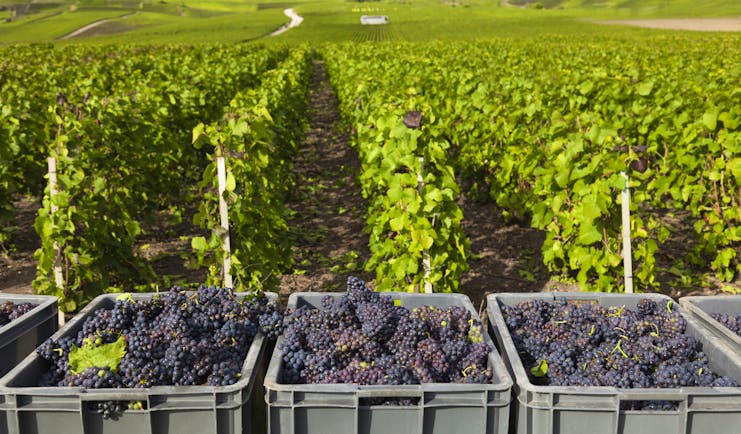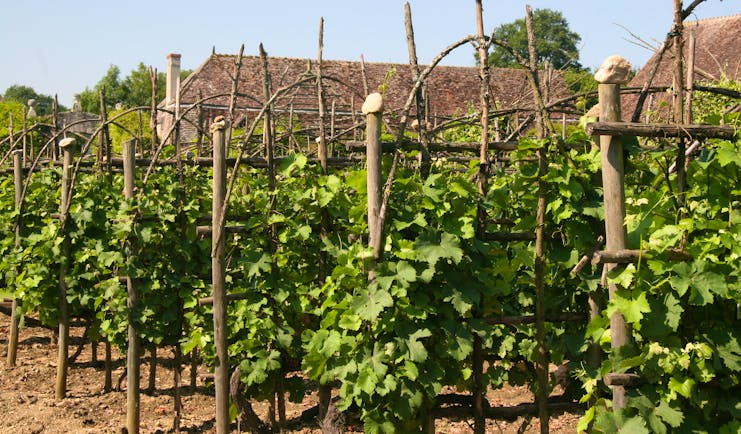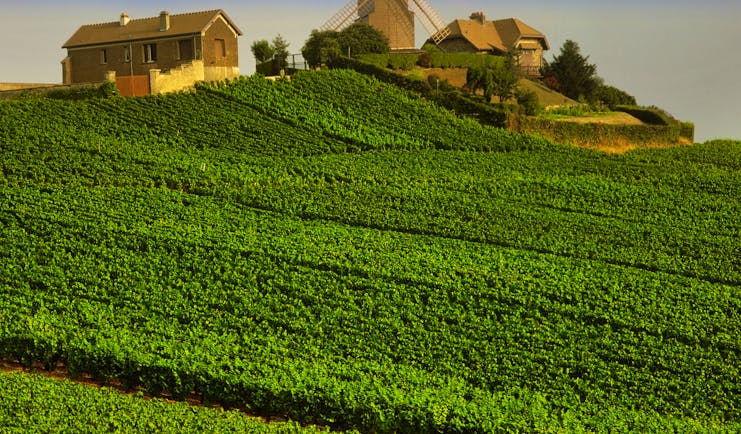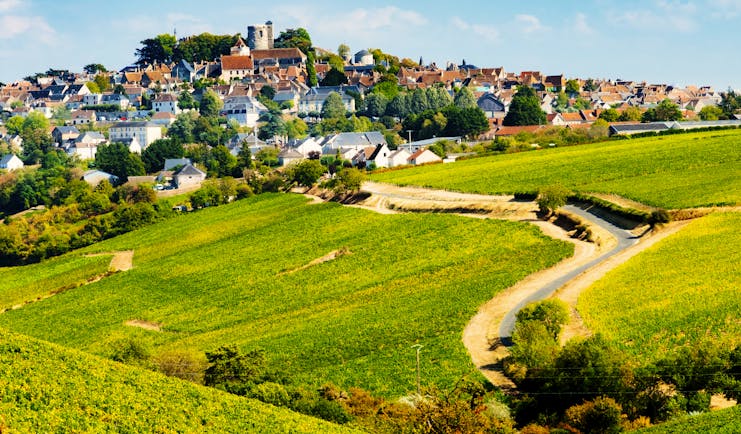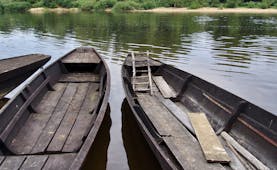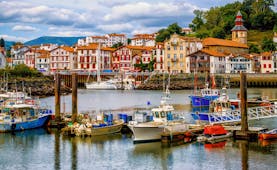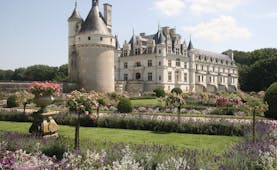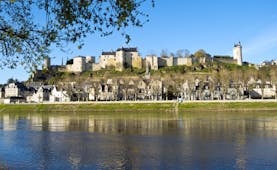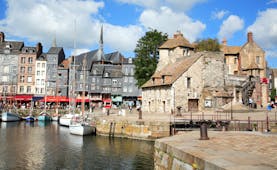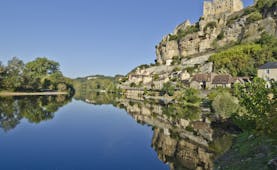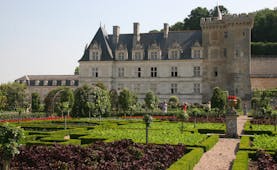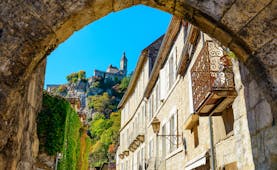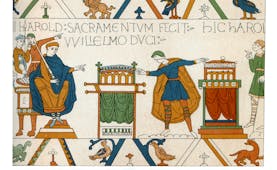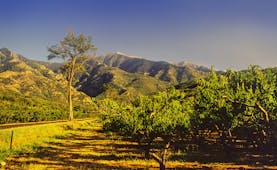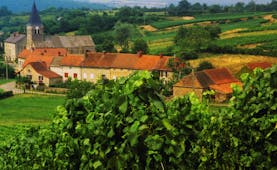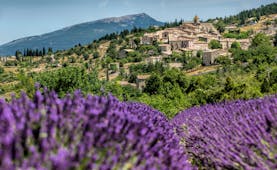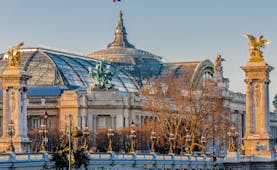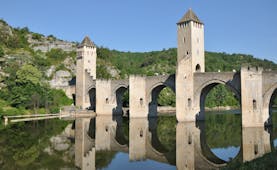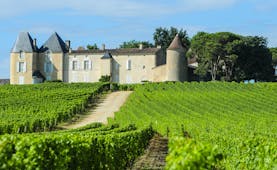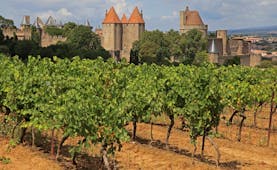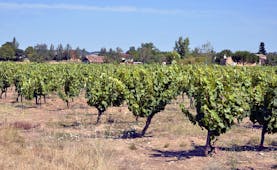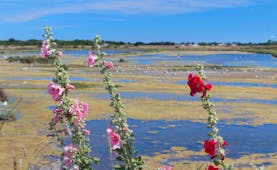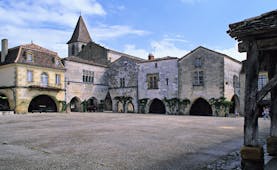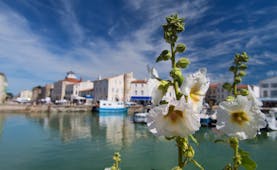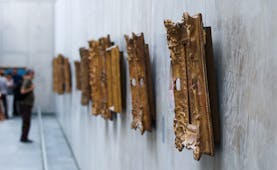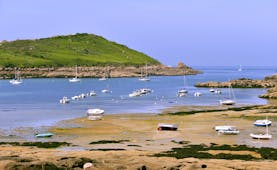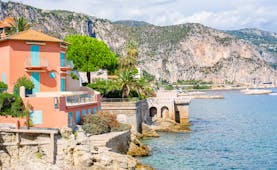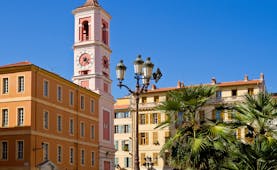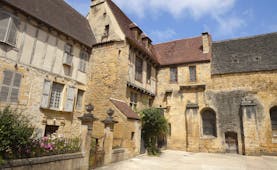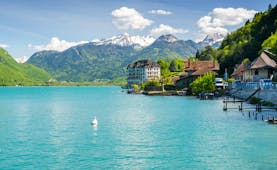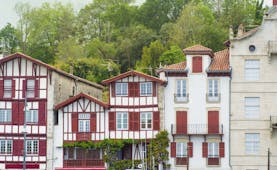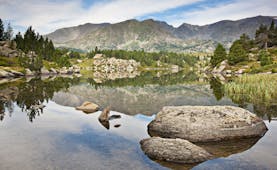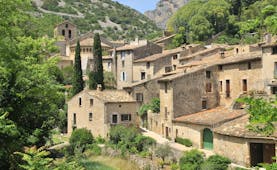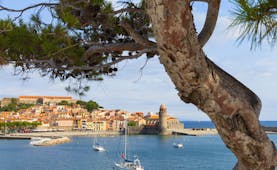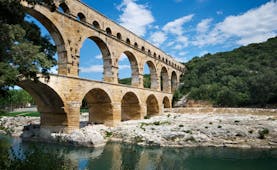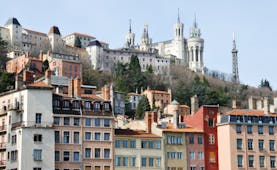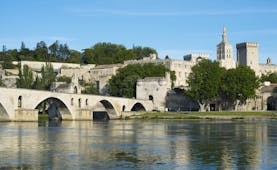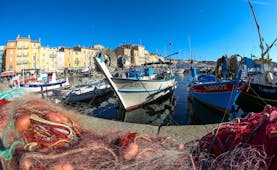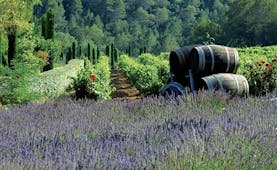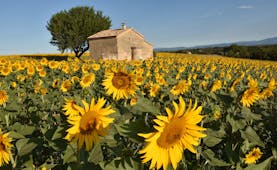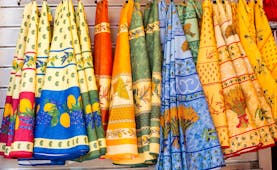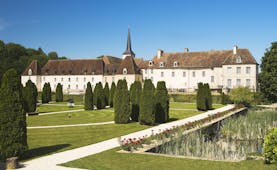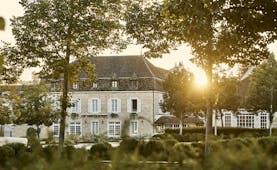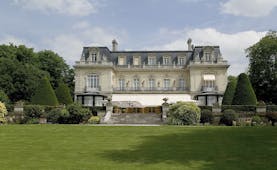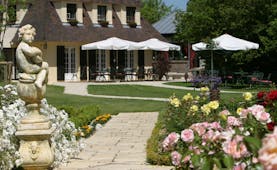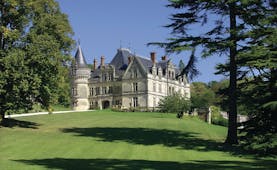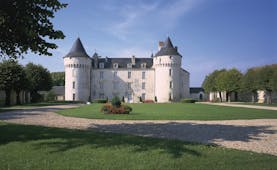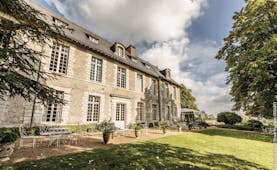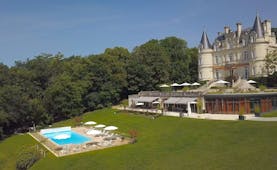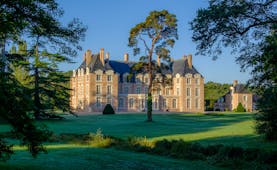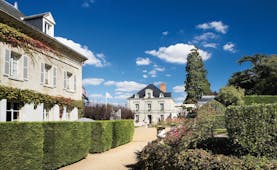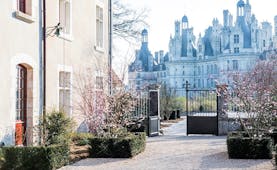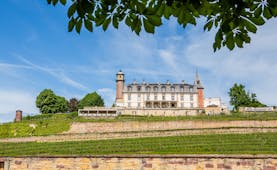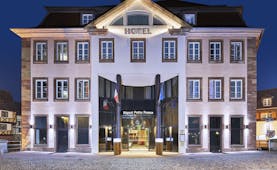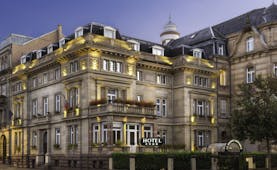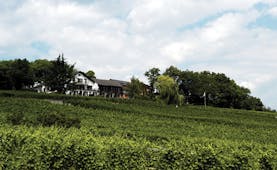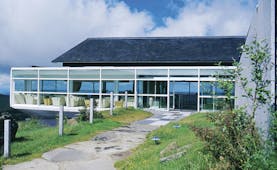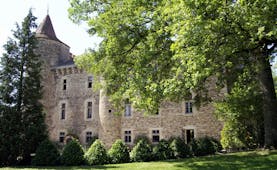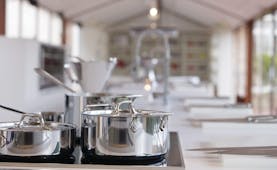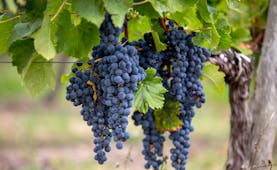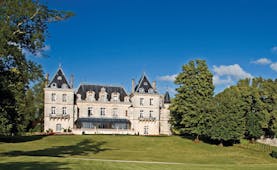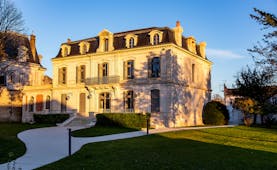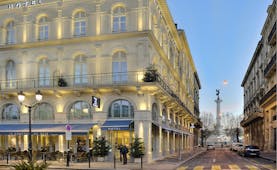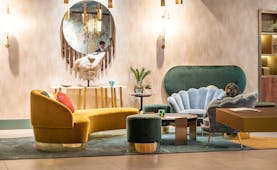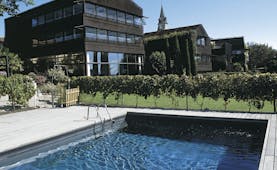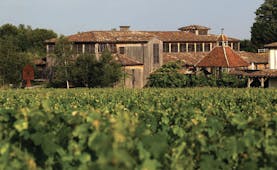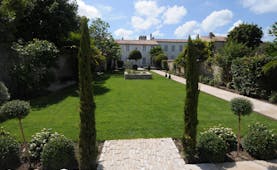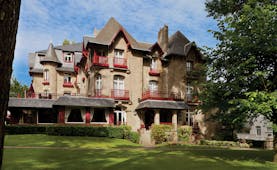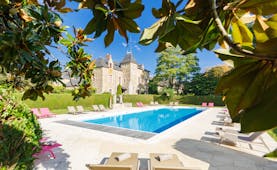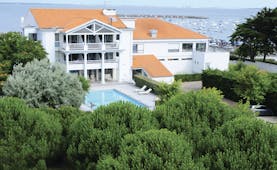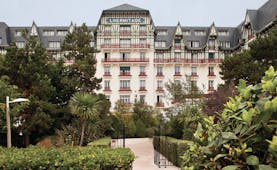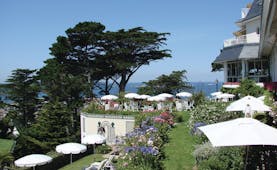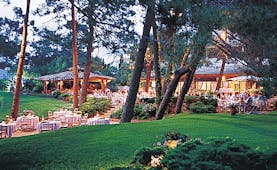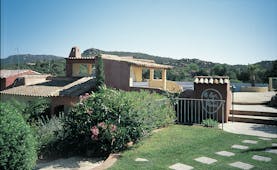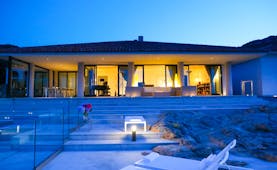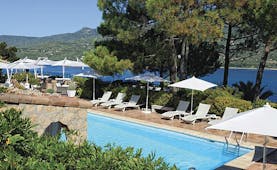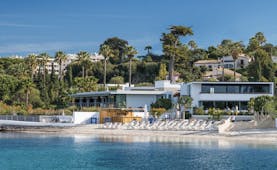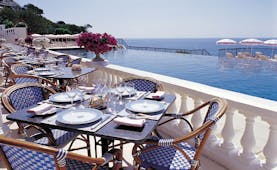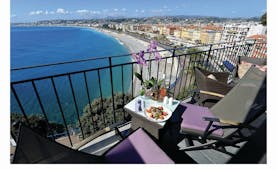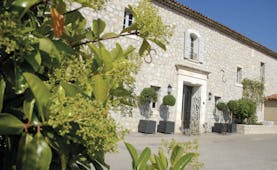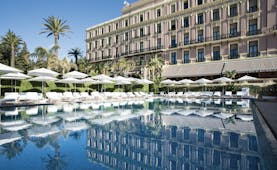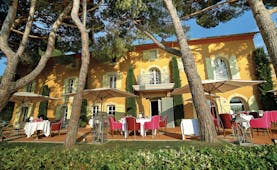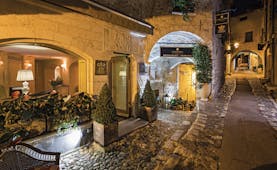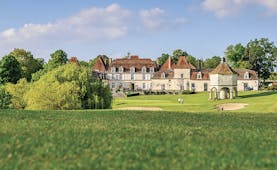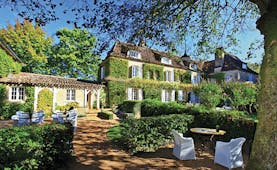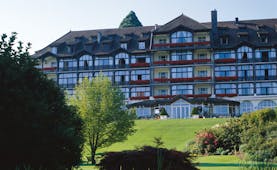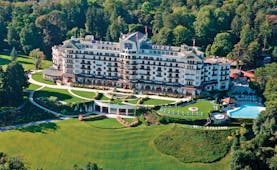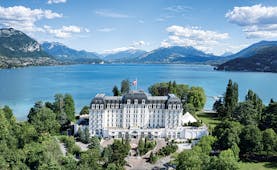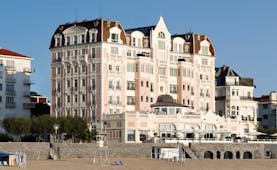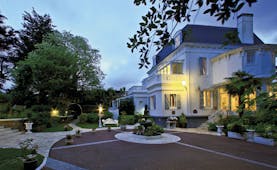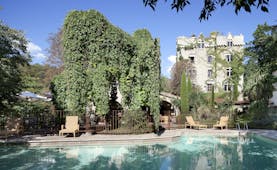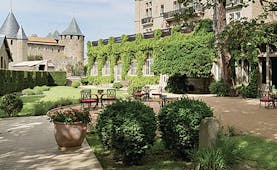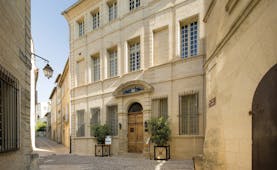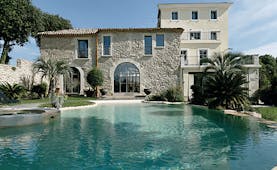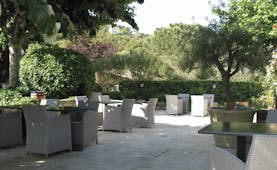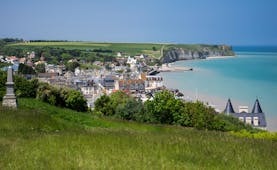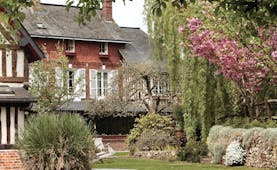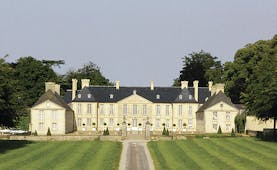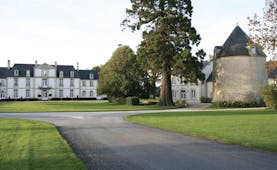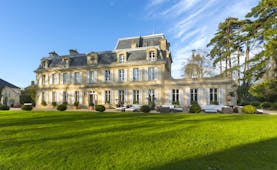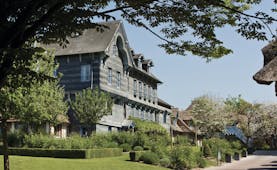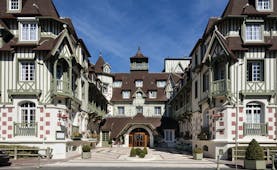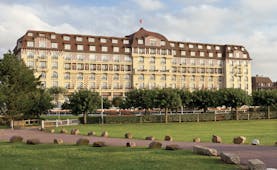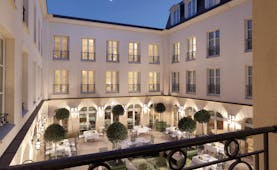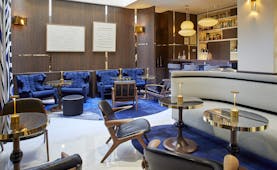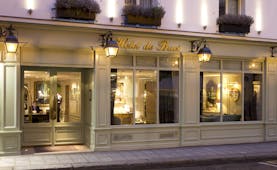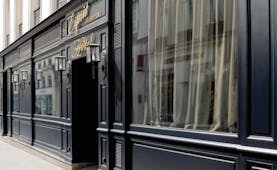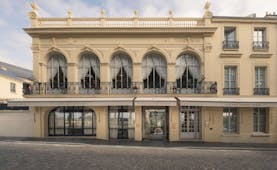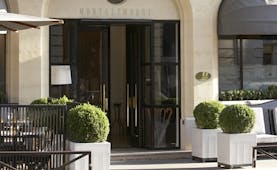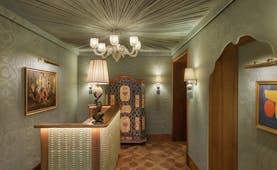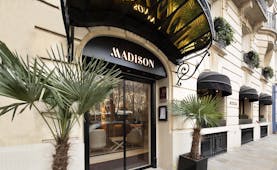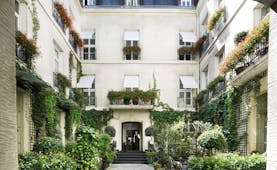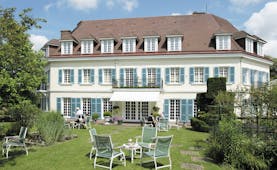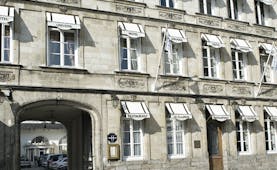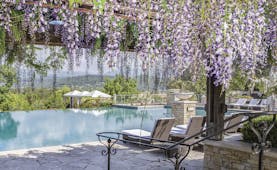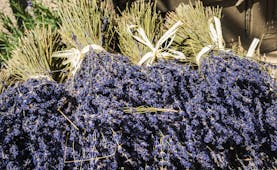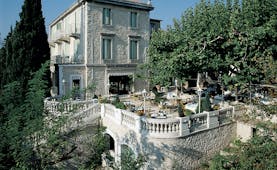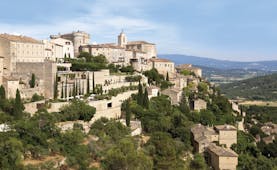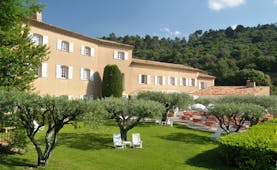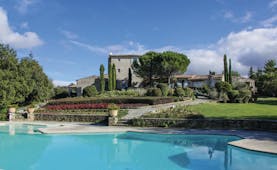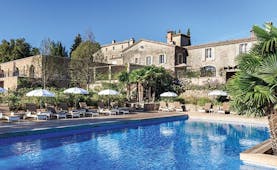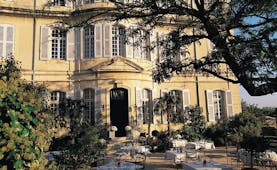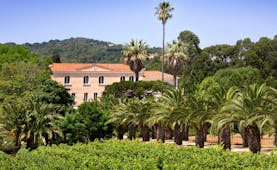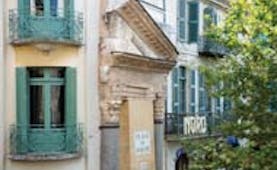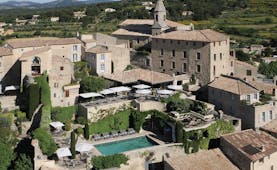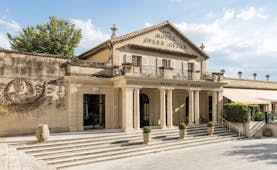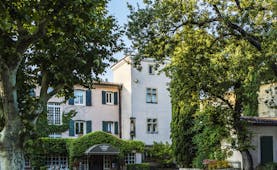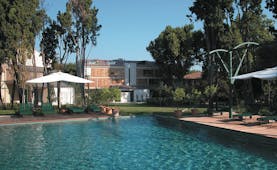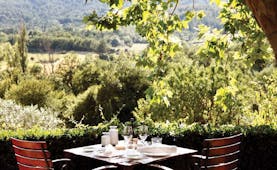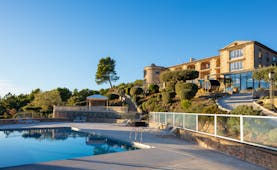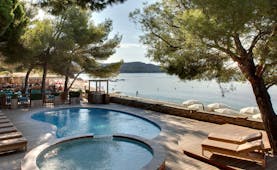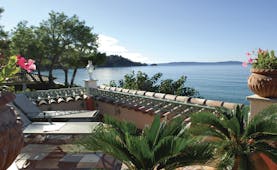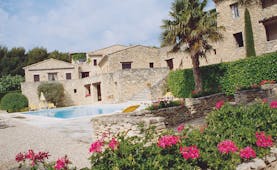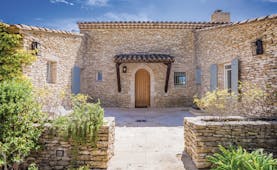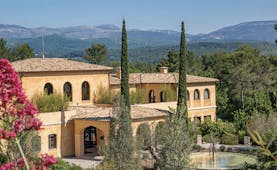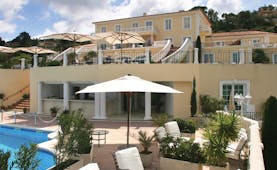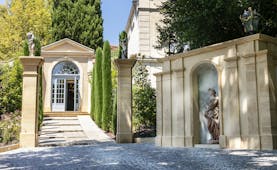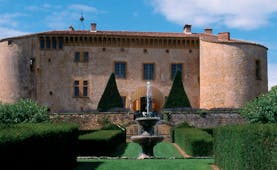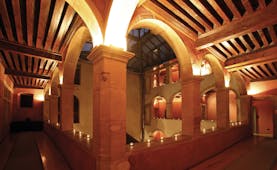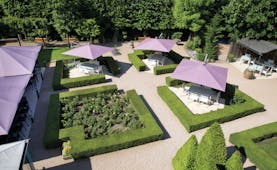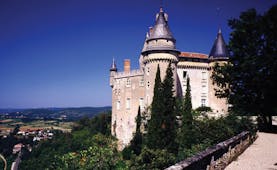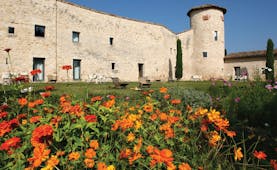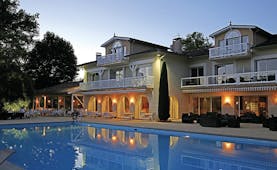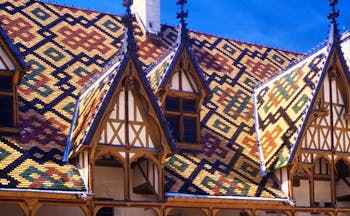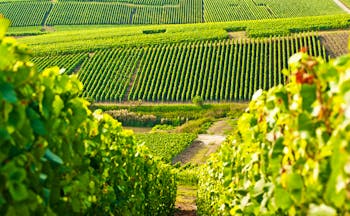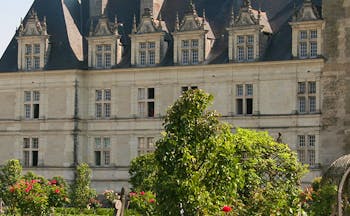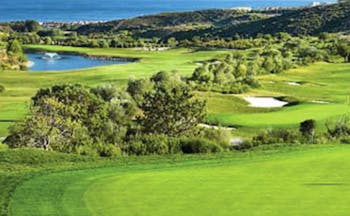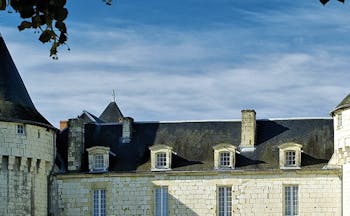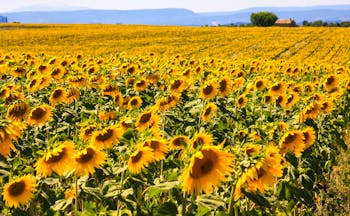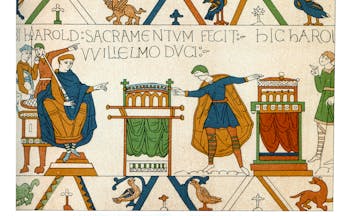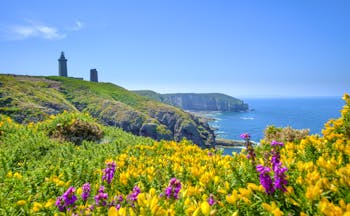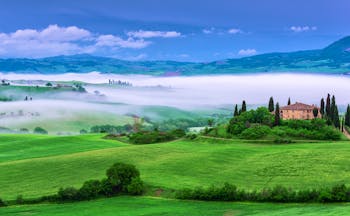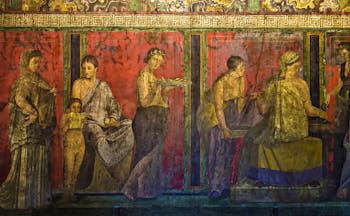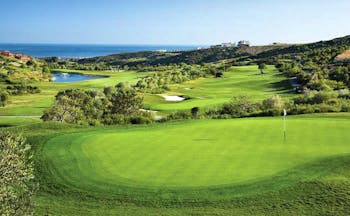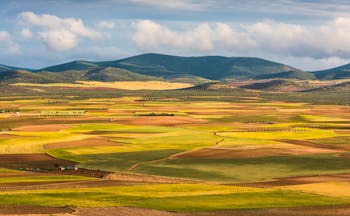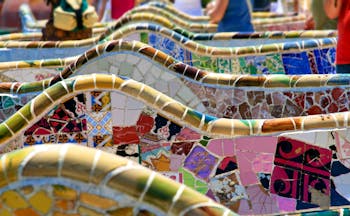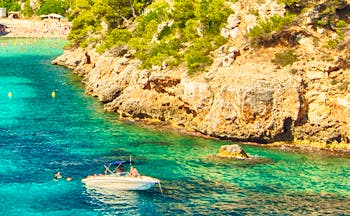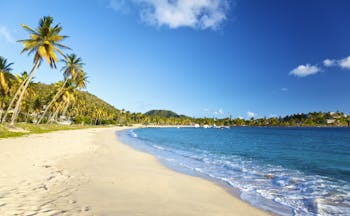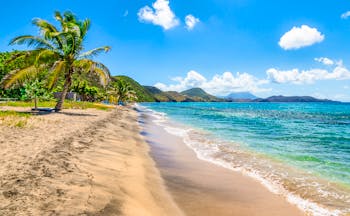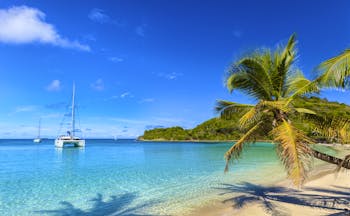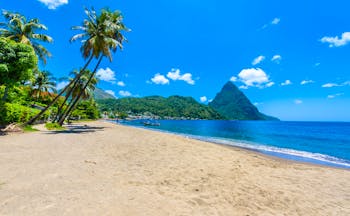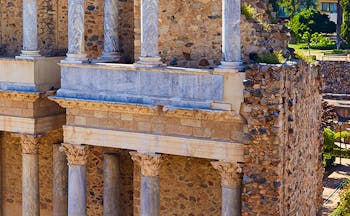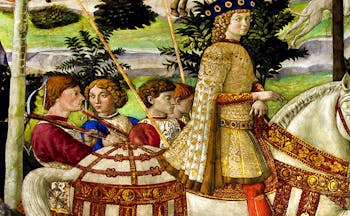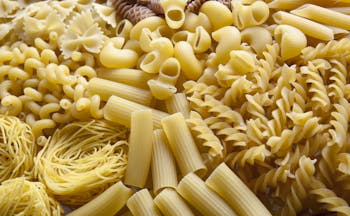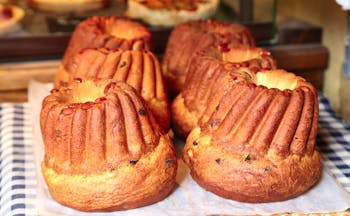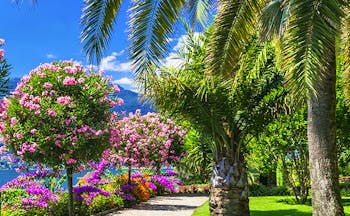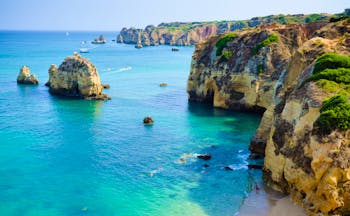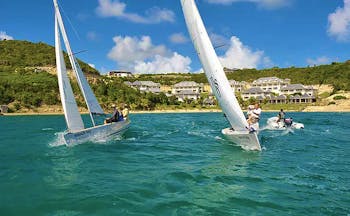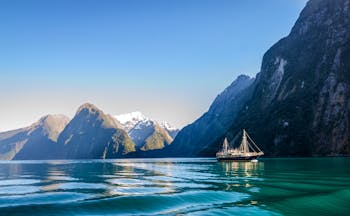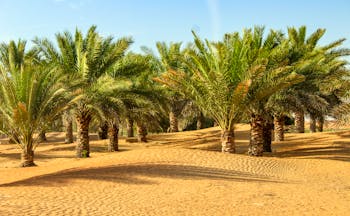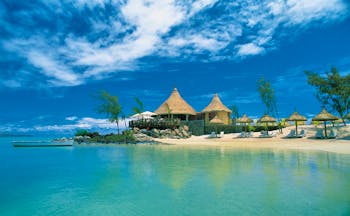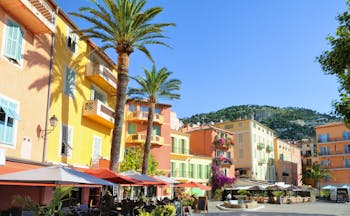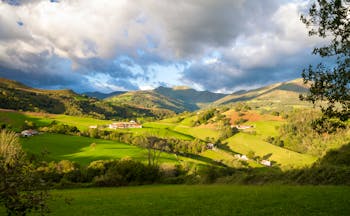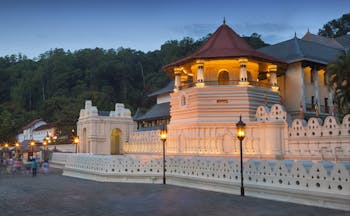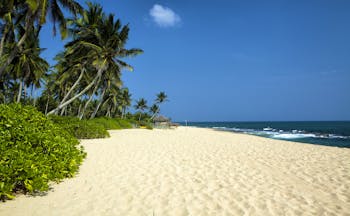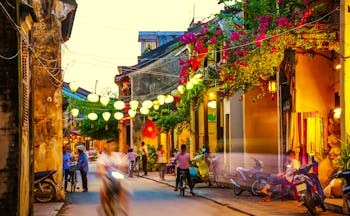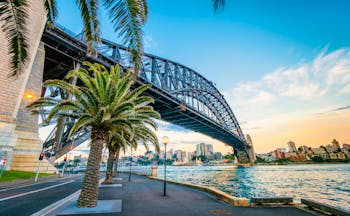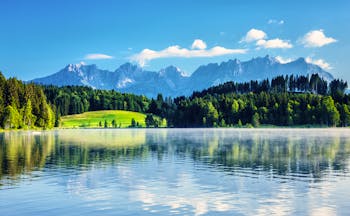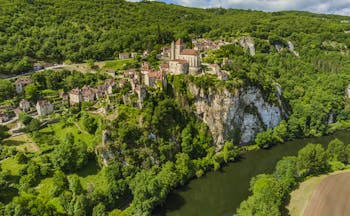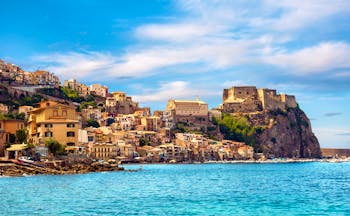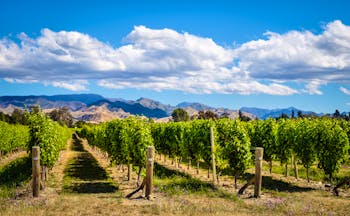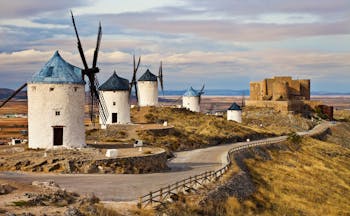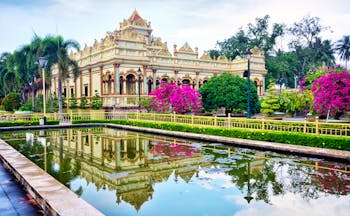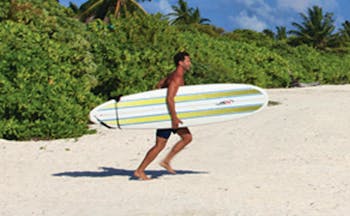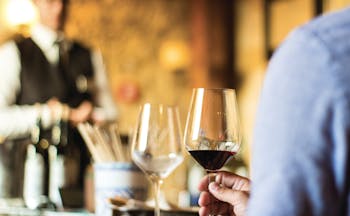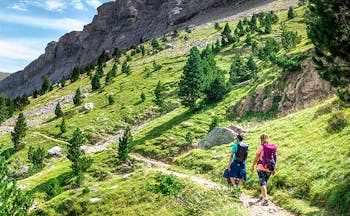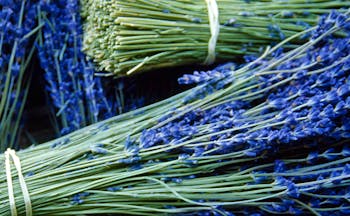Luxury self-drive tailor-made holiday to the gardens and vineyards at the heart of France
This 7-night self-drive touring holiday of the vineyards and gardens of the heart of France is a gentle but fascinating tour featuring several regions: Champagne, Burgundy, Berry and the Loire Valley. Each region abounds with interest for the visitor with vineyards and gardens, some well-known, others deserving to be discovered. Your tour starts in Calais, from where you drive into the lush, green, agricultural landscape of the Champagne region. After two nights here, Burgundy beckons. The route through countryside ripe for wine-growing and -making encourages visitors to stop and visit the wine merchants and their vines as you go. Then you cross into the very heart of France and the little-known region of Berry. You can visit the gardens of the Prieure d'Orsan. From here it is only a short drive to the Sancerre vineyards and the city of Bourges. You then stay in the region of the Sologne south of Blois and near famous chateaux such as Chambord. The last region on the tour is the Loire Valley with its many Renaissance châteaux and undulating vineyards, producing rare light reds and popular whites. There are mediaeval chateaux such as Chinon, Chenonceau, Villandry and Aay-le-Rideau. On the way back to Calais, it would be possible to visit Monet’s garden at Giverny.
Highlights
Epernay • Visit Reims • Visit Troyes • Visit Dijon • Cote d’Or vineyards • Cote de Beaune vineyards • Visit the gardens of the Prieure d’Orsan • Visit le Marais in Bourges • Visit Saumur • Amboise • Visit Chateau Cheverny • Visit Chateau Chenonceau • Visit Chateau d Villandry • Vineyard visits • Visit Chateau d’Azay-le-Rideau • Go to a Son-el-Lumiere • Chinon
Day by day
Today, your self-drive touring holiday of the gardens and vineyards at the heart of France starts with your drive from Calais to the Champagne region. What you can fit in today once you arrive will depend on how early you leave Folkestone. The drive from Calais to Epernay is about 3 hours. You spend two nights in the Champagne region.
You have a whole day to explore the Champagne region. From your base in Epernay, you have the champagne houses of Epernay on your doorstep. Further north, there is Reims, although you may want to visit here on the first day. Venture into the nearby countryside to see the Aisne and Marne Valleys, which see the vineyards thrive, before viewing and tasting the produce of this landscape in one of the hundreds of underground chalky wine cellars in either Épernay or Reims. These Gallo-Roman cellars notably belong to champagne firms of international repute, such as Moët et Chandon and Mercier. Champagne Tribaut, a family-run business that supplies companies such as Krug and Taittinger, opens their cellars and vineyards to guests for tours and wine-tasting sessions. This intimate, homely experience lets the visitor see an alternative side of wine-growing to large scale production. Equally, just across the Marne Valley, you can find the vineyards that produce Pinot Noir, or head southwards through the Côte des Blancs to taste the local mineral-packed Chardonnay. Aside from vineyards and galleries, Reims offers a wealth of impressive architecture and culture, from the Gothic Cathedral Notre-Dame with its wine-grower carvings, and the Palais du Tau, to the floral delights of Nanteuil-la-Forêt.
Your drive today from door to door is about 3 hours, but you may want to stop for sightseeing along the route. Troyes and Dijon are obvious places of interest. In Dijon visit the Musée des Beaux-Arts, for a short tour of its many tombs and ancient structures, and see the statue of Bareuzai the wine grower, on the Rue des Forges, who acts as a guiding spirit for the whole of Dijon. Your destination for today is near to the wine region town of Beaune.
The Burgundy region is best known for its Pinot Noir red wines, and Chardonnay white wines; however, Beaune is perfectly suited for an exploration of all the wines Burgundy has to offer. Venture north to visit the relatively small vineyard of Vougeot, though the neighbouring, more recently cultivated vineyard of Clos de Vougeot is home to the produce of 70 wine growers. From here visitors can explore the Christian Clerget estate and the Château de Clos, which has four huge 12th Century winepresses, and taste the wine produced there. In nearby Chenôve, the Cuverie des ducs de Bourgogne houses two 13th Century winepresses, for visitors to view. Marsannay-la-Côte produces a selection of rosé wines that are obtained after a short maceration of Pinot Noir grapes. These wines can be tasted at the Domaine Regis Bouvier and the Château de Marsannay. However, the most famous of the Côte de Nuits wines is Chambertin, produced in Gevrey-Chambertin, a village very close to Gilly-lés-Cîteaux. When sitting down for a meal, partake in the tradition of drinking a kir before your meal, as this blend of crème de cassis and white wine, produced locally, is the perfect start to a delicious evening. Venture further out to visit the famous Chablis or take a tour of the white wine vineyards and cellars on the hillside village of Montagny-lés-Buxy.
Today you are heading for the very centre of France in the region of Berry, and to the beautiful garden of the Prieure d’Orsan, near Bourges. This garden is the main focus of the day and should be visited. The priory, which dates from 1107 when it was founded by Robert d’Arbrissel (who also founded the Abbey of Fontevraud, burial place of Richard the Lionheart and numerous other Plantagenets including Eleanor of Aquitaine), is now delightfully restored, as are the gardens, inspired by the mediaeval monastic gardens that would have been here for years after the founding of the priory. The gardens have come to the interest of the British public recent years due to being featured in Monty Don’s recent BBC Two programme on French gardens and deserve to be visited almost more than any other garden in France. The gardens are situated between the priory buildings and are divided into individual areas of intense interest: there are vines, fruit trees, a flourishing kitchen garden, a maze, lavender beds and wild flower meadows. It is an artistic creation that resembles a tapestry yet where organic crop rotation is practised. The thought and the care that goes into the attention to detail is spectacular. It is a truly wondrous place. The gardens are peaceful, the birdsong is vibrant and butterflies abound. You can also walk on the grass! We also recommend a trip into the surreal, but magnificent city of Bourges, with its charming medieval streets and fantastic cathedral. In the centre of Bourges lies the Marais, an area set aside for locals to cultivate their own gardens, veined with canals perfect for the small wooden boats that residents use to navigate them. The Marais is so large that it has led to Bourges being named one of France’s greenest cities. Springtime in Bourges and the International Ecological Film Festival are two festivals, among others, not to be missed in spring and summer. Just north of Bourges, La Borne is a village famous for its stoneware and ceramics. The Centre for Contemporary Ceramics offers a valuable insight into the Berry way of life. A little off the most direct route to your stop for the night is the wine-village of Sancerre, again another recommended stopping off point. The Domaines Vacheron and Henri Bourgeois are owned by two of the oldest and best reputed wine-making families in the area. To pick up more information about the wines of the area, visit the Maison de Sancerre in the old town and take the interactive tour, which culminates in a wine tasting. Nearby is Chavignol, home of the Crottin de Chavignon, a versatile goat’s cheese that goes well with the local wine.
Today you are on the doorstep of the Loire Valley, known as the Garden of France, and you should start to enjoy the rolling, fertile landscape with its orchards and vineyards as well as the magnificence of its abundant chateaux and their gardens. It is worth heading north first to visit the Chateau de Cheverny, home to the same family for 600 years. Many treasures can be found at Cheverny including a 17th century Gobelin tapestry on display in the Arms room and a Louis XIV chest of drawers in the Boulle style. The park contains four distinct gardens: a tulip garden, a pleasure garden, a maze and a vegetable garden. From here you can go further north to Amboise. Amboise, on the banks of the river Loire, is home to the Chateau d’Amboise, a 15th century residence of Charles VIII and where you will find the tomb of Leonardo da Vinci. Nearby is the Chateau du Clos Lucé where Leonardo Da Vinci lived. In the grounds are displays of working models of this designs. South of Amboise is the Château de Chenonceau, known sometimes at the ‘Ladies Castle’ due to its string of female owners, such as Catherine de Medici and Diane de Poitiers, and not to be missed. This château offers an extensive art gallery and a collection of exquisite Flemish tapestries, as well as wine-tasting opportunities. The gardens have lawn and wide flower beds, spectacularly colourful in summer. Your stop for two nights is south of Tours.
The historic city of Tours with its mediaeval old town and cathedral is about 15 minutes’ drive away; the magnificent chateaux of the Loire Valley such as Chenonceau, Amboise and Chaumont in one direction and Azay-le-Rideau, Langeais and Villandry in the other. The Maison de Balzac is in nearby Saché and the town of Chinon has a fascinating mediaeval history and has associations with the writer Rabelais who was born nearby. Chinon is also known for its red wine as is St Nicholas de Bourgueil on the northern bank of the river Loire. To the east of Tours the white wine route runs along the Loire valley through Montlouis and Vouvray. There are outstanding gardens at the Chateau de Villandry and the Chateau de Chaumont, where every year 24 different landscapes from around the world are featured.
Leave the hotel after breakfast and drive back to Calais for your return Eurotunnel crossing.
Excellent. So much easier coming to you than trying to book accommodation ourselves. Will certainly come to you again, especially for a self-drive holiday.Mr D, Sep 2023
Holiday price guide Prices from £1,690 per person based on two people sharing a double or twin room.
Holiday Code FRSD07
Call us on 01392 441245
Luxury self-drive tailor-made holiday to the gardens and vineyards at the heart of France
Today, your self-drive touring holiday of the gardens and vineyards at the heart of France starts with your drive from Calais to the Champagne region. What you can fit in today once you arrive will depend on how early you leave Folkestone. The drive from Calais to Epernay is about 3 hours. You spend two nights in the Champagne region.
You have a whole day to explore the Champagne region. From your base in Epernay, you have the champagne houses of Epernay on your doorstep. Further north, there is Reims, although you may want to visit here on the first day. Venture into the nearby countryside to see the Aisne and Marne Valleys, which see the vineyards thrive, before viewing and tasting the produce of this landscape in one of the hundreds of underground chalky wine cellars in either Épernay or Reims. These Gallo-Roman cellars notably belong to champagne firms of international repute, such as Moët et Chandon and Mercier. Champagne Tribaut, a family-run business that supplies companies such as Krug and Taittinger, opens their cellars and vineyards to guests for tours and wine-tasting sessions. This intimate, homely experience lets the visitor see an alternative side of wine-growing to large scale production. Equally, just across the Marne Valley, you can find the vineyards that produce Pinot Noir, or head southwards through the Côte des Blancs to taste the local mineral-packed Chardonnay. Aside from vineyards and galleries, Reims offers a wealth of impressive architecture and culture, from the Gothic Cathedral Notre-Dame with its wine-grower carvings, and the Palais du Tau, to the floral delights of Nanteuil-la-Forêt.
Your drive today from door to door is about 3 hours, but you may want to stop for sightseeing along the route. Troyes and Dijon are obvious places of interest. In Dijon visit the Musée des Beaux-Arts, for a short tour of its many tombs and ancient structures, and see the statue of Bareuzai the wine grower, on the Rue des Forges, who acts as a guiding spirit for the whole of Dijon. Your destination for today is near to the wine region town of Beaune.
The Burgundy region is best known for its Pinot Noir red wines, and Chardonnay white wines; however, Beaune is perfectly suited for an exploration of all the wines Burgundy has to offer. Venture north to visit the relatively small vineyard of Vougeot, though the neighbouring, more recently cultivated vineyard of Clos de Vougeot is home to the produce of 70 wine growers. From here visitors can explore the Christian Clerget estate and the Château de Clos, which has four huge 12th Century winepresses, and taste the wine produced there. In nearby Chenôve, the Cuverie des ducs de Bourgogne houses two 13th Century winepresses, for visitors to view. Marsannay-la-Côte produces a selection of rosé wines that are obtained after a short maceration of Pinot Noir grapes. These wines can be tasted at the Domaine Regis Bouvier and the Château de Marsannay. However, the most famous of the Côte de Nuits wines is Chambertin, produced in Gevrey-Chambertin, a village very close to Gilly-lés-Cîteaux. When sitting down for a meal, partake in the tradition of drinking a kir before your meal, as this blend of crème de cassis and white wine, produced locally, is the perfect start to a delicious evening. Venture further out to visit the famous Chablis or take a tour of the white wine vineyards and cellars on the hillside village of Montagny-lés-Buxy.
Today you are heading for the very centre of France in the region of Berry, and to the beautiful garden of the Prieure d’Orsan, near Bourges. This garden is the main focus of the day and should be visited. The priory, which dates from 1107 when it was founded by Robert d’Arbrissel (who also founded the Abbey of Fontevraud, burial place of Richard the Lionheart and numerous other Plantagenets including Eleanor of Aquitaine), is now delightfully restored, as are the gardens, inspired by the mediaeval monastic gardens that would have been here for years after the founding of the priory. The gardens have come to the interest of the British public recent years due to being featured in Monty Don’s recent BBC Two programme on French gardens and deserve to be visited almost more than any other garden in France. The gardens are situated between the priory buildings and are divided into individual areas of intense interest: there are vines, fruit trees, a flourishing kitchen garden, a maze, lavender beds and wild flower meadows. It is an artistic creation that resembles a tapestry yet where organic crop rotation is practised. The thought and the care that goes into the attention to detail is spectacular. It is a truly wondrous place. The gardens are peaceful, the birdsong is vibrant and butterflies abound. You can also walk on the grass! We also recommend a trip into the surreal, but magnificent city of Bourges, with its charming medieval streets and fantastic cathedral. In the centre of Bourges lies the Marais, an area set aside for locals to cultivate their own gardens, veined with canals perfect for the small wooden boats that residents use to navigate them. The Marais is so large that it has led to Bourges being named one of France’s greenest cities. Springtime in Bourges and the International Ecological Film Festival are two festivals, among others, not to be missed in spring and summer. Just north of Bourges, La Borne is a village famous for its stoneware and ceramics. The Centre for Contemporary Ceramics offers a valuable insight into the Berry way of life. A little off the most direct route to your stop for the night is the wine-village of Sancerre, again another recommended stopping off point. The Domaines Vacheron and Henri Bourgeois are owned by two of the oldest and best reputed wine-making families in the area. To pick up more information about the wines of the area, visit the Maison de Sancerre in the old town and take the interactive tour, which culminates in a wine tasting. Nearby is Chavignol, home of the Crottin de Chavignon, a versatile goat’s cheese that goes well with the local wine.
Today you are on the doorstep of the Loire Valley, known as the Garden of France, and you should start to enjoy the rolling, fertile landscape with its orchards and vineyards as well as the magnificence of its abundant chateaux and their gardens. It is worth heading north first to visit the Chateau de Cheverny, home to the same family for 600 years. Many treasures can be found at Cheverny including a 17th century Gobelin tapestry on display in the Arms room and a Louis XIV chest of drawers in the Boulle style. The park contains four distinct gardens: a tulip garden, a pleasure garden, a maze and a vegetable garden. From here you can go further north to Amboise. Amboise, on the banks of the river Loire, is home to the Chateau d’Amboise, a 15th century residence of Charles VIII and where you will find the tomb of Leonardo da Vinci. Nearby is the Chateau du Clos Lucé where Leonardo Da Vinci lived. In the grounds are displays of working models of this designs. South of Amboise is the Château de Chenonceau, known sometimes at the ‘Ladies Castle’ due to its string of female owners, such as Catherine de Medici and Diane de Poitiers, and not to be missed. This château offers an extensive art gallery and a collection of exquisite Flemish tapestries, as well as wine-tasting opportunities. The gardens have lawn and wide flower beds, spectacularly colourful in summer. Your stop for two nights is south of Tours.
The historic city of Tours with its mediaeval old town and cathedral is about 15 minutes’ drive away; the magnificent chateaux of the Loire Valley such as Chenonceau, Amboise and Chaumont in one direction and Azay-le-Rideau, Langeais and Villandry in the other. The Maison de Balzac is in nearby Saché and the town of Chinon has a fascinating mediaeval history and has associations with the writer Rabelais who was born nearby. Chinon is also known for its red wine as is St Nicholas de Bourgueil on the northern bank of the river Loire. To the east of Tours the white wine route runs along the Loire valley through Montlouis and Vouvray. There are outstanding gardens at the Chateau de Villandry and the Chateau de Chaumont, where every year 24 different landscapes from around the world are featured.
Leave the hotel after breakfast and drive back to Calais for your return Eurotunnel crossing.
Excellent. So much easier coming to you than trying to book accommodation ourselves. Will certainly come to you again, especially for a self-drive holiday.Mr D, Sep 2023
Holiday price guide Prices from £1,690 per person based on two people sharing a double or twin room.
Holiday Code FRSD07
Our prices include
● Eurotunnel return crossing from Folkestone to Calais for car and passengers
● 2 nights’ bed and breakfast in a Classic double room at La Briqueterie near Épernay
● 2 nights’ bed and breakfast in a Classic double room at the Hostellerie de Levernois near Beaune
● 1 night’s bed and breakfast in a Standard double room at the La Borde en Sologne, near Blois
● 2 nights’ bed and breakfast in a Classic double room at the Domaine de la Tortiniere, near Tours
● Concierge service and Expressions Holidays regional helpful hints
Our prices do not include
● Early check-in or late check-out at any hotels (although we can arrange this on request at additional cost)
● Any other services not mentioned above, such as transfers and meals except breakfast at hotels
● Personal holiday insurance. This is essential and cover should be in place from when you book the holiday.
● Local tourist tax, usually between Euros 1 and 3 per person per night, and payable locally to the hotel
Additional information
Driving times
Calais to Épernay 3 hours
Épernay to Gilly-lés-Cîteaux 2 hours 50 minutes
Gilly-lés-Cîteaux to Sologne 5 hours
Sologne to Tours 1 hour 30 minutes
Tours to Calais 5 hours 10 minutes
Call us on 01392 441245
Luxury self-drive tailor-made holiday to the gardens and vineyards at the heart of France
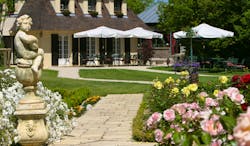
Hostellerie La Briqueterie is a 5-star boutique hotel, perfectly situated for exploring the wineries of the Champagne region, including some of the most prestigious champagne houses. Delicious cuisine and excellent spa facilities afford guests a truly tranquil experience.
Classic double room
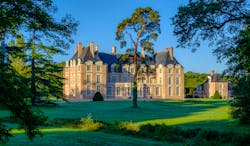
La Borde en Sologne Chateau & Spa is an historic chateau dating from the 17th century in 124 acres of landscaped park in the English and French style with lake.
Classic double room
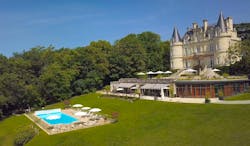
The Domaine de la Tortinière is a charming, boutique 4-star chateau-hotel in about 15 hectares of parkland in the countryside about 15 minutes’ drive south of Tours.
Classic double room
Excellent. So much easier coming to you than trying to book accommodation ourselves. Will certainly come to you again, especially for a self-drive holiday.Mr D, Sep 2023
Holiday price guide Prices from £1,690 per person based on two people sharing a double or twin room.
Holiday Code FRSD07
Call us on 01392 441245
Luxury self-drive tailor-made holiday to the gardens and vineyards at the heart of France
About Burgundy
An Expressions tailor-made holiday to Burgundy is an opportunity to explore an area which is famous throughout France as being a region rich in wine and gastronomy as well as in history and art. The best-known area of Burgundy is that of the Cote d`Or and the Cote de Beaune located close to Beaune with its villages whose names are those of some of the most famous wines; Gevrey Chambertin, Nuits St Georges, Pommard, Meursault and Montrachet. Beaune itself, deserves a visit with its enchanting 15th Century Hotel Dieu and wine museum. While on holiday in Burgundy you will find that almost everywhere there are offers of wine tastings and direct sales. This area of eastern France is all too often visited just en route from the north to the south, but we would urge you to linger a little longer and enjoy a longer holiday in Burgundy to explore the region in detail. A self-drive touring holiday is an excellent way to explore Burgundy, offering the chance to discover the vineyards of northern France; to combine a stay here with one in Beaujolais; to travel further south en route to Provence; or to enjoy a tour around the whole of France.
Highlights of Burgundy
Cultural highlights include Burgundy wines and marcs, local wine festivals, the Beaujolais vineyards, and the Romanesque architecture.
Climate of Burgundy
Average air temperatures in centigrade: Jan: 6.1, Feb: 5.9, Mar: 10.3, Apr: 15.3, May: 15.8, Jun: 23.8, Jul: 25.8, Aug: 26.1, Sep: 21.2, Oct: 15.5, Nov: 9.1, Dec: 6.2. Source: Direction de la Meteorologique de France.
Call us on 01392 441245
Luxury self-drive tailor-made holiday to the gardens and vineyards at the heart of France
About Champagne
An Expressions tailor-made holiday to Champagne offers the chance to explore one of the great historic provinces of France. Known in the 9th century under Charlemagne for its agricultural riches, it became famous for its produce and celebrated fairs. Today, though known of course for its eponymous sparkling wine, and despite lying en route from the UK to the south of France, Champagne is one of the least visited regions in France, an under sung gem waiting to be explored. Naturally, bubbly looms large on the list of attractions for visitors to the region, with Epernay, a lovely town on the chalky hills southwest of Reims, the undisputed champagne capital of the world. Here, you can enjoy tastings at the home of several champagne producers, including Moet & Chandon and Perrier-Jouet. Smaller producers can also be visited between the pretty towns of Bar sur Aube and Les Riceys. Champagne can also be tasted at the celebrated Taittinger cellars in Reims, the largest town in the Champagne. A bustling university city, Reims has all the feel of a busy regional capital, with a fabulous old town and magnificent 13th century cathedral, one of the greatest gothic buildings of northern France. Largely made up of undulating hills and pretty farmland, Champagne's landscape rises in the north towards the densely wooded, river-riven walker's paradise of the Ardennes, with the Plateau de Langres in the south home to the fortified Roman hill town of Langres, sometimes known as the Carcassonne of the North - without the crowds. Due to its proximity to the north coast of France, the Champagne region can easily be incorporated into a self-drive touring holiday of the Northern Vineyards or can be used as a stopover en route to the French Alps and Lakes.
Highlights of Champagne
Champagne cellar visits in Reims, Epernay and in vineyards along the Aube; the old town of Charleville Mezieres, capital of the Ardennes department; Charles de Gaulle's country residence and burial site, Colombey les Deux Eglises; Reims, with one of the finest medieval cathedrals in France, once the coronation place of French kings, now with one of the best son-et-lumieres in France; Reims' magnificent Roman triumphal arch; Lac du Der, the biggest reservoir in Europe, one of the most important migration routes for Europe's waterfowl, sheltering vast flocks of cranes, passing through in their thousands in spring and autumn; the fortified hill town of Langres, ‘Carcassonne of the North’ - minus the crowds; la foret d'Orient near Troyes and Montagne de Reims, both Regional Natural Parks; river trips along the Seine, the Marne, and the Aube; the 13th century gothic cathedral of Troyes, with its spectacular stained glass windows; autumn wine festivals.
Travel around the Champagne region
The Champagne region is reached very easily from the UK by air and rail. With the most extensive rail network in Western Europe, France is a great country to explore by train. The nationally owned SNCF (Societe Nationale des Chemins de Fer) runs fast, efficient services between the main towns. Buses cover the rural areas, but services can be rather sporadic, with departures often at awkward times. To visit Champagne's cellars - the main reason for being here - by far the best option is to rent a car.
Call us on 01392 441245
Luxury self-drive tailor-made holiday to the gardens and vineyards at the heart of France
About Loire Valley
An Expressions tailor-made holiday to the Loire Valley offers travellers a chance to explore this magnificent region, known as the `Garden of France`, traditionally the hunting grounds of the Kings of France, is renowned for its gentle countryside, vineyards, forests, rivers and numerous chateaux. At the centre of this region are the regal river Loire and its numerous tributaries, attractive historic towns and cathedral cities such as Tours, Blois and Chinon and of course the chateaux. The chateaux range from vast palaces to fortresses, from mediaeval strongholds to Renaissance delights and include the well-known ones of Chenonceaux, Chambord, Villandry and pretty Azay le Rideau. The vineyards offer great variety from sparkling Vouvray to the reds of Chinon and Bourgueil. Our `Loire Valley` covers the central region of Touraine and the more westerly region of Anjou as well as taking in a more southern part that extends towards Poitiers. The visitor to the Loire Valley is embraced by seemingly endless amusements whatever the time of year, enticing for longer stays and so well situated for overnight stops or short breaks. It is very easy to reach the Loire Valley by train, combining a holiday here with a visit to Bordeaux. Alternatively, a self-drive holiday to the Loire Valley is an excellent option, allowing you to explore the region's Chateaux by car or to combine a stay in the region with a holiday to the Dordogne region and Normandy.
Highlights of the Loire Valley
Cultural highlights include wines and wine vinegars, wild mushrooms - (visit the mushroom museum), the Troglodyte caves, and local art exhibitions.
Festivals in the Loire Valley
Son et Lumiere in the chateaux in the summer months. Summer festival in Chinon in August.
Climate of the Loire Valley
Average air temperatures in Centigrade: Jan: 7.8, Feb: 6.8, Mar: 10.3, Apr: 16.1, May: 16.4, Jun: 23.6, Jul: 25.8, Aug: 24.5, Sep: 21.1, Oct: 16.2, Nov: 11.2, Dec: 7.0. Source: Direction de la Meteorologique de France.

